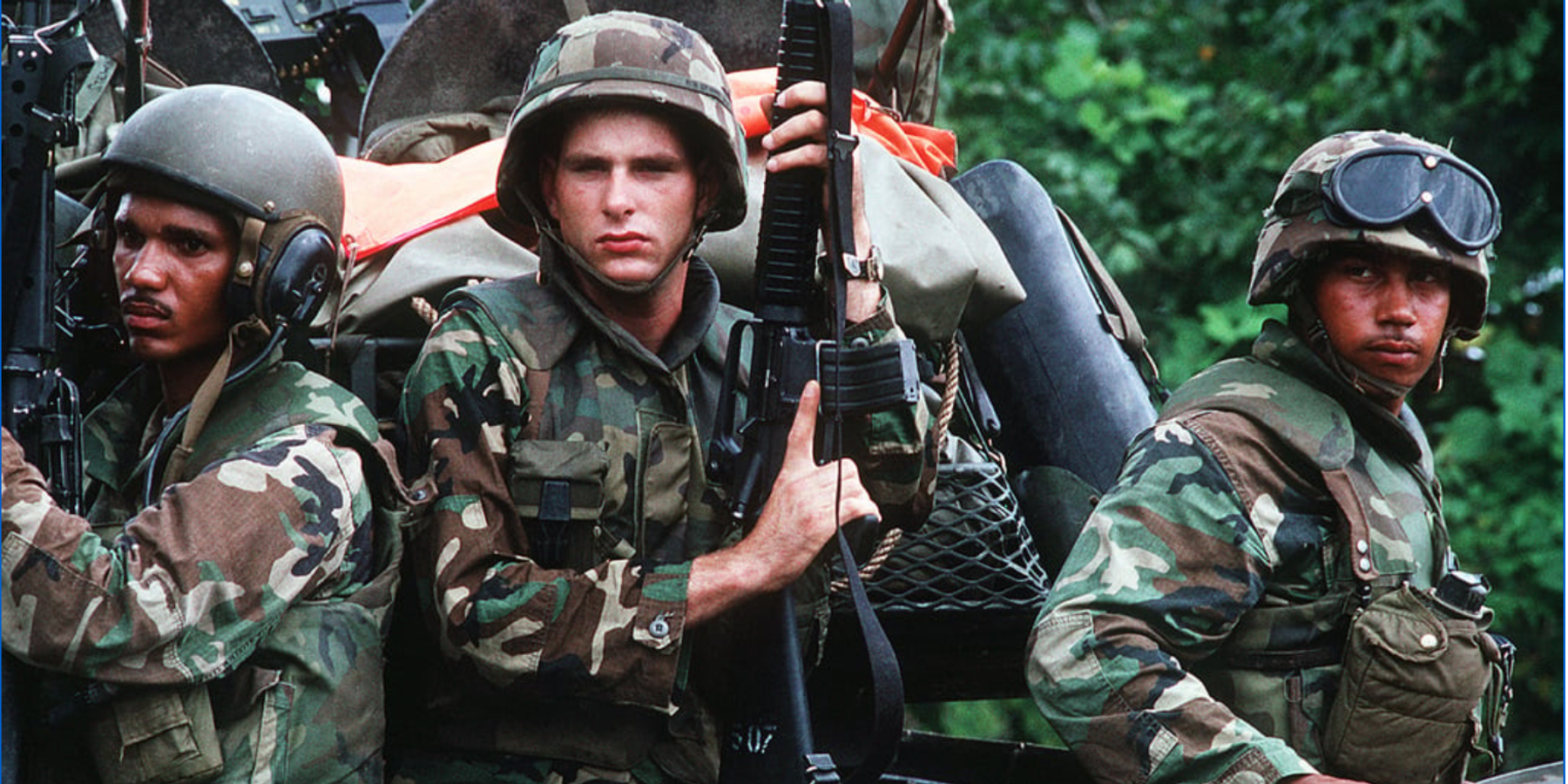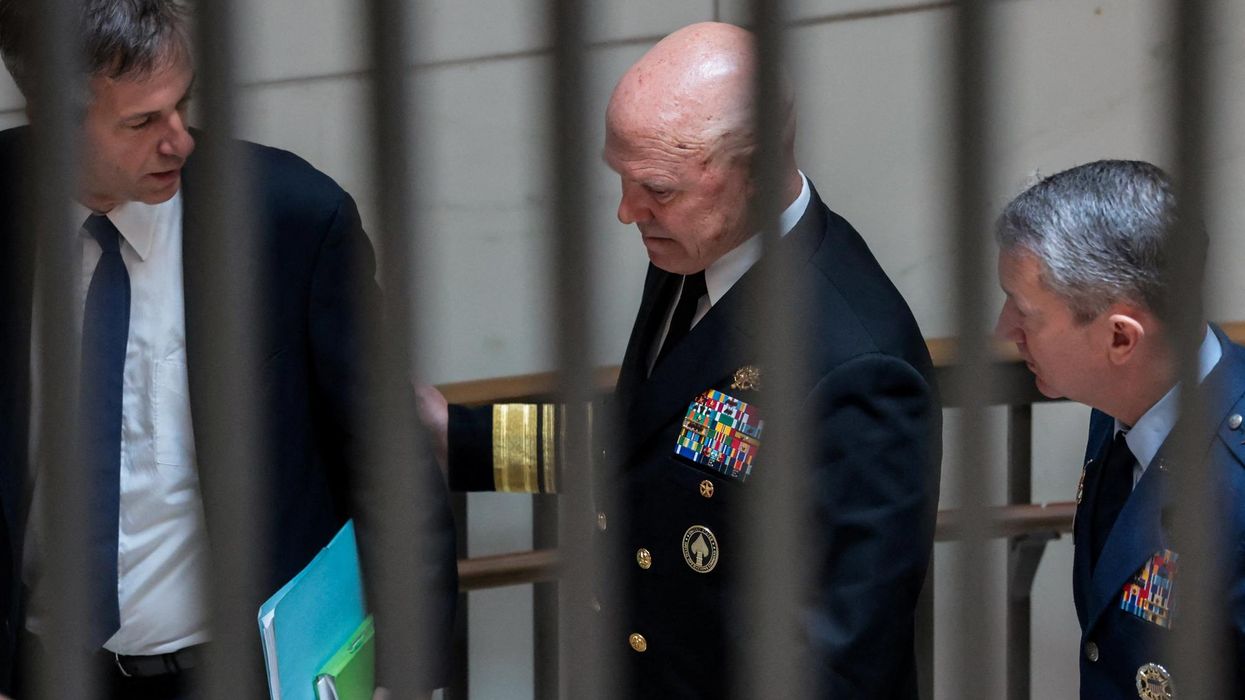This is the first in a new Quincy Institute/Responsible Statecraft project series highlighting the writing and reporting of U.S. military veterans. Click here for more information.
When the red tracers of an AC130 gunship’s minigun slashed through the warm, dry night skies above Panama City at 12:41 AM on December 20, 1989, few guessed that it would mark an opening stanza in America’s expansive unipolar moment.
In the hours that followed, more than 20,000 U.S. troops conducted a swift and violent invasion of a sovereign state to remove the inconvenient and venal regime of General Manuel Antonio Noriega, who had embarrassed and bedeviled U.S. policymakers for years.
Now nearly forgotten, this invasion — bequeathed with the trite and even cynical name of “Operation JUST CAUSE” — marked a tentative but crucial first step toward the “forever wars” of today. Freed from the frightening, but disciplining, constraints of the Cold War, American leaders were now unchecked by rival powers, and the very perception of success for Operation JUST CAUSE would help shape their decisions going forward.
Conceived as the illegitimate child of America’s late 19th and early 20th century flirtation with regional imperialism and the naval theories of U.S. Admiral Alfred Thayer Mahan, Panama and its canal have long exerted significant pull over U.S. strategy and domestic politics. A more fulsome account of the U.S.-Panamanian relationship is beyond the scope of this essay, but the hypocrisy and bad faith on both sides in this tragicomic saga has few equals, even in the annals of U.S. hemispheric policy.
The 1977 Panama Canal Treaty was ratified against fierce Republican opposition, and it provided for a 22-year turnover transition during which time there would be a hybrid administration of the Canal Zone. By 1989, this resulted in a dizzying checkerboard of U.S. and Panama Defense Force (PDF) military installations interspersed next to and co-located with each other across the isthmus. The U.S. reserved the treaty right to intervene militarily to protect the canal.
The agreement, however, was predicated upon the assumption of good relations between the signatories, a dubious proposition even under the nationalist but pragmatic Panamanian regime of Omar Torrijos. When the cartoonishly duplicitous Manuel Noriega assumed de facto power in Panama after Torrijos’ death in 1981, he initially leveraged support for Reagan’s policies in Central America to mask his growing ties with drug cartels and other adversaries. This awkward fling ended, when Noriega’s 1987 indictment on federal drug charges ushered in a hostile turn in relations.
Noriega quickly became a political detriment to the Reagan and George H.W. Bush administrations. Anti-Noriega candidates decisively won elections in May 1989, only for regime militias to violently overturn the results. Performative U.S. sanctions caused considerable damage to the populace, but did little to dislodge Noriega, who also saw off two coup attempts in 1988 and 1989.
During the latter attempt, with Noriega in the custody of the golpistas, American forces sealed two of the three routes leading to PDF Headquarters (“La Comandancia”) in Panama City, but failed to put in a third roadblock allowing loyalist forces to defeat the coup, rescue Noriega, and inflict a humiliating defeat on the Bush administration.
As tensions skyrocketed, U.S. military preparations accelerated and evolved from a special forces “snatch” operation personally targeting Noriega into a massive strike designed to destroy the PDF and uproot the regime in its entirety.
When PDF troops killed a U.S. Marine at a checkpoint in Panama City and detained and brutalized another U.S. family, Bush acted. Thousands of U.S. troops conducted a crushing and aggressive night attack, achieving complete surprise and effectively destroying the PDF by daybreak. After hiding for several days, Noriega was forced to flee, seeking refuge at the Papal Nunciature. Resistance quickly faded, and Noriega was extradited to the U.S. after several days of negotiations.
The denied victors in the May election assumed the reins of power. In the following weeks, most U.S. troops returned home, although units in Panama battled a massive crime wave and rooted out pockets of Noriega supporters. Twenty-three U.S. troops were killed. Panamanian casualty estimates are mired in controversy, with SOUTHCOM estimating that 314 PDF troops had died, along 202 civilians, and leftist sources citing higher civilian tolls.
For the U.S., JUST CAUSE was at the time a clear success. A quick, decisive, low-cost military operation had laid to rest a humiliating years-long array of diplomatic and policy failures. The invasion was an important proof of concept as one of the first skirmishes fought after passage of the 1986 Goldwater-Nichols Act which provided for new unified “Regional Commands.”
It also marked a tactical inflection point: for over 200 years, U.S. ground forces had followed a distinctly “solar powered” pattern of operating in the day and digging in at night. In Panama, U.S. troops emerged as lethal and effective night fighters. The All-Volunteer Force — whose performance in the 1970s and early 80s had been shaky at best — finally seemed to deliver the capabilities that its early boosters had envisioned.
Strategically, however, the invasion of Panama has not aged as well. In hindsight, it seems policymakers drew a series of suboptimal initial lessons from this venture, which were then amplified by the much larger 1991 Gulf War.
First, U.S. leaders were seduced by the low casualties, domestic popularity, and quick success achieved first in Panama, and then repeated in DESERT STORM. These two operations enabled a strategic recalculation of the perceived costs and benefits of military action and elevated the relative attractiveness of military options. Even before the 9/11 attacks, the greater policymaker demand for “kinetic” solutions throughout the 1990s led to a dramatic spike in military activity.
Second, the invasion of Panama was clearly a “false positive” for the efficacy of regime change operations. The quick and politically antiseptic removal of a hostile government, and the ease with which the U.S. installed a new one, incentivized policymakers toward maximalist demands, incrementally undermining the messy and emotionally unsatisfying drudgery of diplomacy.
Bu the “Cliffs Notes” version of the operation that the policy community took on generally dismissed the unique advantages the U.S. military enjoyed in Panama, such the solid intelligence picture gleaned from an eighty-year presence, Noriega’s overwhelming unpopularity among Panamanians, and the existence of a legitimate alternate government.
Finally, the rapid success of the invasion and the ease with which it lanced an ugly and embarrassing political boil for the United States (Noriega) encouraged policy planning that underestimated or even obviated the need to plan for messy post-conflict political engagement. This is not surprising: military success is clean and popular; diplomacy is hard and draining. We retroactively devalued having a viable, legitimate, indigenous political option in Panama.
By contrast, when we went into Afghanistan and later Iraq, swift military success was followed by a policy vacuum and then by chaos and violence.
Microsoft co-founder Bill Gates once said that “success is a lousy teacher. It seduces people into thinking they can’t lose.” This was certainly the case for Operation JUST CAUSE. As we look back on decades of perpetual conflict and consider the path that brought us here, it is hard to look at the invasion of Panama as anything other than an early success that subsequently helped teach policymakers a slew of very dubious lessons.
And as any pre-GPS traveler remembers, it is hard to recover from an early wrong turn, especially when the mistakes only become clear miles down the road.
- Militarization of the Middle East began long before the US invasion of Iraq ›
- America's modern addiction to the big stick ›
- Invading Panama and deposing Noriega in 1989 was easy, right? | Responsible Statecraft ›
















